With all of the “I love my MM” threads, I thought it was time to extol the virtues of the Kreg pocket hole jig. I got it relatively recently and only used it twice so far, but it has let me join panels in a fraction of the time that it used to take.
Here’s the latest thing I used it for. The customer wanted a cabinet to hide the electrical panel:
Now, it looks like this:
Nice big door for easy access in case they ever add another circuit:
And a close-up of the pocket screw holes. I didn’t bother plugging the holes since they won’t normally be seen:
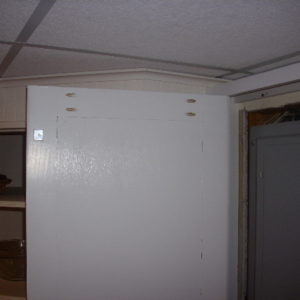
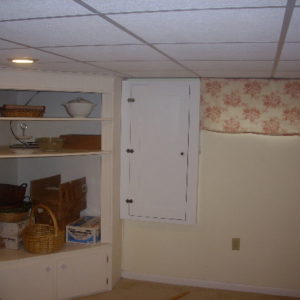
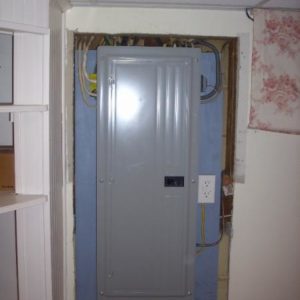
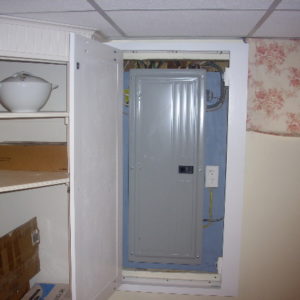
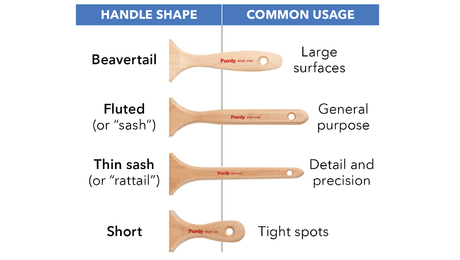


















Replies
Who moved my post to the Photo Gallery? I started it under General Discussions.
OK, so maybe it belongs here because, um.. it contains pictures???
But then, not all posts with pictures end up here.
I was actually hoping for a discussion of the Kreg pocket hole jig and maybe some examples of its use... something more along the lines of a general discussion.
It's really no big deal, but it does make me wonder who is sitting around reading all of the new posts as they come in and making these decisions. Is it necessary? Does it add value? Is it cost-justified? I take no affront, I'm just a naturally curious guy.
OK, so now we're in the Tools for Home Building folder. I suppose that probably makes more sense than either of the 2 folders that it's lived in so far, but I'd still like to know who's moving it. Clearly whoever it is, is reading the posts and so they're reading this right now. Who are you... you all-powerful, mysterious mover of posts?
that will teach ya to post pics!
i'm like you i don't really see the need for not being in another cat.
but anyway,i'm like you i bought a kreg,the cheapy deal,like 30.00
went home used it and decided the best thing to do was throw it in the trash,so i would have to go buy their kit.i did buy it.
i can't think of many 125. tools that paid for themselves so fast.
face frames are painless now.
on cabinet drawers i bore the front and back pcs. a little glue and screw them to the sides. the pockets are hidden by the fronts. i think i could bust a finely dovetailed drawer before these would come apart.
yea i wouldn't trade mine for a mm.
the older i get ,
the more people tick me off
on cabinet drawers i bore the front and back pcs. a little glue and screw them to the sides. the pockets are hidden by the fronts. i think i could bust a finely dovetailed drawer before these would come apart.
Nice move. maybe you could post some photos in the Gallery..............oh, wait, I think were there now.
Pesky moderators.....Some of the saddest, emptiest people I have known are those who were raised to believe that they were above others. Even when among their peer group, they're not really happy because the bond which they share is easily broken, due to it's illusionary nature.
Which version of the jig did you buy? It's on my list.
Thx,
Scott.
I bought the Kreg K3 which is also known as the Kreg Jig Master System. I paid $139 locally.
I had put off buying it for a while, but I'm glad I finally got it. I've only used it twice on income-producing jobs, but with the "time is money" mentality, it's already paid for itself.
Cool thanks.Now if someone figures out a way to combine the MM with the Kreg system, I figure there will be a veritable thread Cartel here...LOL.Scott.
I use it to pre assemble meter joints on casing. John
I know hwat is on my Christmas list now!!
Thanks guys!
Dave
Don,
I bought the kit about 5 years ago, but I typically just used the portable 2 hole jig with the clamp.
I thought it was a nice tool but never really saw it as a time saver...
Then I decided after three years of owing the whole kit to actually read the instructions and set it up properly.
That made a huge improvement! Now when I need to assemble face frames or exterior trim, such as azek window wraps, the kreg is the go-to tool.
when I need to assemble ... exterior trim, such as azek window wraps, the kreg is the go-to tool.
I hadn't thought of that use, good call.
Don,
The kreg saves a ton of time on window wraps and it makes all of the joints virtually perfect.
Just remember to use exterior/coated screws.
where do you get exterior screws for the kreg?
You can get the Kreg brand and McFeely's stainless screws here
http://www.mcfeelys.com/search/pocket+hole+screws+stainless'Man who say it cannot be done should not interrupt man doing it' ~ Chinese proverb
View Image
I bought the original Aluminum version probably 10 years ago at a woodworking show..Recently, I bought the master kit plus about $100 in clamps and about $50 in screws from a guy on CL for about $75 or so. A great setup. Initially, I didn't like the look of the newer plastic units, but this thing is SUPER well made and thought out.And using the vacuum while drilling means you don't bog down your cordless drill.I don't use it often, but when I do, it's invaluable.Great for cabinetry filler/corners too.JT
thanks
Looks like FR beat me to the punch on the SS, but I have also used coated screws from Kreg, available at your local BB or tool shop.
Just another option.
I bought one a few years back, and while it doesn't see daily use,when it does get used, it proves it's worth.
found watching the 6 buck DVD helpful in conceptualization of the range applications outside of the obvious
Eric.
Thanks for starting this thread. I've already learned a couple of new ways to use the Kreg jig here.
The only thing I have to contribute is that there are several good DVDs out which show how certain jobs are done. Those demonstrations helped me to see how to set up and use the jig and the various clamps effectively and efficiently.
Looking forward to making cabinets with it.
I bought Gary Steigler's DVD on the Kreg system at Rockler for $10 -- it's worth getting.I remember using dowels on my first project and then learning from Norm at NYW about how much better biscuits were. Most guys say that the switch from biscuits to pocket screws is just as dramatic. No more clamps while the glue sets up!
That's been my progression too. I have an old doweling jig, put away years ago. I like biscuits but I've been using far fewer of them, since I bought the Kreg system. Fast, accurate and strong.
Some guys say that they clamp some pocket screw applications but I haven't run into anything that needed it yet.
Ok, Guys.Seeing as we have the national brain trust for the Kreg system here, I've got a question. (I hope I'm not hijacking the thread.)I'm planning a large (42" x 12 feet) dining table out of VG Doug Fir.I'll start by ripping 1.5" pieces from 2x10 flat sawn boards. When the pieces are turned on edge I get a 1.5" x 2" piece of VG fir. Like I said, the pieces are 12' long.I have a jointer, and will no doubt need to build extension tables for 12' pieces.I always thought I'd put it together with biscuits every foot and lots of clamps. Would I be better with pocket screws?Much thanks,Scott.
Scott,
I think you coud go either way on this one. Just plain glueing the jointed sides would be plenty sufficient. I would probably use biscuits for alignment, but I don't think it's needed for strength.
That being said, I LOVE my Kreg pocket hole jig. I use if for cabinet assembly. Especially face frames. It's the best bang for the buck of any tool I know. And I own a lot of tools.
I don't have a Kreg, but I do have a Festool Domino, and have
been using it for a lot of things other than the specialized
purpose I bought it for. Using the built-in stops, it's just amazingly fast to build
stuff that's strong and needs no fasteners.Costs a whole lot more than a Kreg, though.
I don't think that's the ideal application for pocket screws. It seems like biscuits would be easier in this case since, once assembled, you can clamp the entire table with web clamps.
Otherwise, you're talking about using something like 300 pocket screws. I just seems like that would get tedious.
Another advantage to biscuits is that if one day you decide to re-finish this table, you'll be able to remove a lot more material than if you had used pocket screws.
>>>Otherwise, you're talking about using something like 300 pocket screws. I just seems like that would get tedious.My thoughts exactly, thanks.It will have to wait for another project.Scott.
If you ever drill holes for bench dogs, you won't want any metal in the top.http://dallasmartin.shutterfly.com
Right. Tends to be a bit tough on those $50 Forstners.Scott.
stick with biscuits and clamps ... Screws + Kreg are good for one layer only.
Bowling alleys use a stacked method of glued and nailed layers (think of adding 3" thick T&G and you get the idea) with twisty nails ... no screws.
Scott, I don't know how you're planning to glue this up, but glue has an open time that has to be taken into account.
There's a limited time frame that allows you to align your pieces and get the clamps on.
You thinking you can put this all together at one time?
Joe H
I'm gonna +1 for using the Kreg to pre-assemble exterior window wraps. Unreal, it's so much faster.View Image
For something like that, I wouldn't bother with bisquits OR pockets screws.
I'd glue up the top in sections, maybe gluing 3 or 4 strips together at a time. Then glue several of those together, and finally glue 2 or 3 sub-assemblies into the full size top.
First, you won't be wresting a big, heavy piece of wood until the last glue up. Second, you'll have more manageable pieces to clean up between gluings. Third, you won't be going crazy trying to get all those pieces together before the glue starts setting up.
Thanks, nice thinking.Yes, I would always build it up in smaller sections and then the two subs at the end.Cheers,Scott.
I agree with all the posts. It's a very handy device. I bought the heavy plate clamp which mounts to a bench. It really helps to hold the stock down so that there's minimal height discrepancy after the screws are inserted.
Here's another use for the jig.I used it to fasten the risers to the stringers and the treads to the stringers and risers after setting them in construction adhesive. No face nails at all showing.
View Image
View Image
View Image
View Image
http://www.superwoodworks.com
May I ask why you fet it necessary in this application to use the Kreg?
Nice looking stairs by the way.
are you referring to using the jig opposed to just using the step drill bit or to use hidden screws in general?http://www.superwoodworks.com
Using the kreg on the back side of a stringer.
To set the pockets to the correct depth so the screws did have a chance to come through the face of the risers and treads.
The pocket screws pulled everthing tight together and as I said no face nailing was needed. Made for a very solid stairs and no squeaking.http://www.superwoodworks.com
Seriously cool!
And that landing is awesome. What kind of wood is that?
Thanks Don,
The wood is curly yellow birch.http://www.superwoodworks.com
Great looking stair!! Fine homebuilding at its best. Unlike a thread else where on this site talking about building basement partitions on top of carpeting.
this is work to be proud of..
Thanks woodhak.http://www.superwoodworks.com